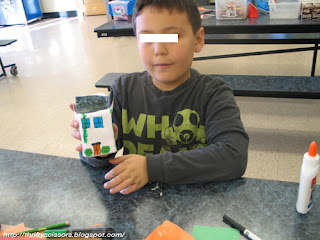 |
| Directions for the Town Hall. Cut around the outlines. Fold on dotted
lines, tuck tabs inside and where shown paste together as drawn in the above "model" sketch. |
Well, just when I thought that I had found all of these little
village templates, out crops another one! Searching newspapers is a
tedious process, even for an archivist! But here is the Town Hall;
better late than never. I think it is the last of the series? I've cleaned it up, folks. Don't forget to enlarge it as much as possible before printing it out.















































